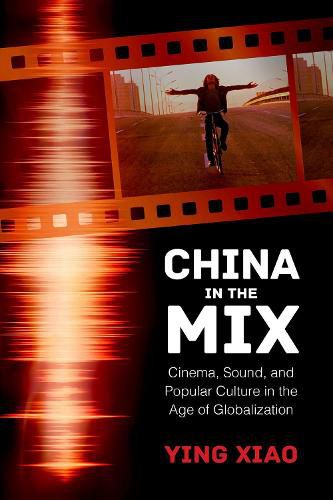Readings Newsletter
Become a Readings Member to make your shopping experience even easier.
Sign in or sign up for free!
You’re not far away from qualifying for FREE standard shipping within Australia
You’ve qualified for FREE standard shipping within Australia
The cart is loading…






This title is printed to order. This book may have been self-published. If so, we cannot guarantee the quality of the content. In the main most books will have gone through the editing process however some may not. We therefore suggest that you be aware of this before ordering this book. If in doubt check either the author or publisher’s details as we are unable to accept any returns unless they are faulty. Please contact us if you have any questions.
Scarce attention has been paid to the dimension of sound and its essential role in constructing image, culture, and identity in Chinese film and media. China in the Mix fills a critical void with the first book on the sound, languages, scenery, media, and culture in post-Socialist China. In this study, Ying Xiao explores fascinating topics, including appropriations of popular folklore in the Chinese new wave of the 1980s; Chinese rock ‘n’ roll and youth cinema in fin de siecle China; the political-economic impact of free market imperatives and Hollywood pictures on Chinese film industry and filmmaking in the late twentieth century; the reception and adaptation of hip hop; and the emerging role of Internet popular culture and social media in the early twenty-first century. Xiao examines the articulations and representations of mass culture andeveryday life, concentrating on their aural/oral manifestations in contemporary Chinese cinema and in a wide spectrum of media and cultural productions.
China in the Mix offers the first comprehensive investigation of Chinese film, expressions, and culture from a unique, cohesiveacoustic angle and through the prism of global media-cultural exchange. It shows how the complex, evolving uses of sound (popular music, voice-over, silence, noise, and audio mixing) in film and media reflect and engage the important cultural and socio-historical shifts in contemporary China and in the increasingly networked world. Xiao offers an innovative new conception of Chinese film and media and their audiovisual registers in the historiographical frame of China amid the global landscape.
$9.00 standard shipping within Australia
FREE standard shipping within Australia for orders over $100.00
Express & International shipping calculated at checkout
This title is printed to order. This book may have been self-published. If so, we cannot guarantee the quality of the content. In the main most books will have gone through the editing process however some may not. We therefore suggest that you be aware of this before ordering this book. If in doubt check either the author or publisher’s details as we are unable to accept any returns unless they are faulty. Please contact us if you have any questions.
Scarce attention has been paid to the dimension of sound and its essential role in constructing image, culture, and identity in Chinese film and media. China in the Mix fills a critical void with the first book on the sound, languages, scenery, media, and culture in post-Socialist China. In this study, Ying Xiao explores fascinating topics, including appropriations of popular folklore in the Chinese new wave of the 1980s; Chinese rock ‘n’ roll and youth cinema in fin de siecle China; the political-economic impact of free market imperatives and Hollywood pictures on Chinese film industry and filmmaking in the late twentieth century; the reception and adaptation of hip hop; and the emerging role of Internet popular culture and social media in the early twenty-first century. Xiao examines the articulations and representations of mass culture andeveryday life, concentrating on their aural/oral manifestations in contemporary Chinese cinema and in a wide spectrum of media and cultural productions.
China in the Mix offers the first comprehensive investigation of Chinese film, expressions, and culture from a unique, cohesiveacoustic angle and through the prism of global media-cultural exchange. It shows how the complex, evolving uses of sound (popular music, voice-over, silence, noise, and audio mixing) in film and media reflect and engage the important cultural and socio-historical shifts in contemporary China and in the increasingly networked world. Xiao offers an innovative new conception of Chinese film and media and their audiovisual registers in the historiographical frame of China amid the global landscape.